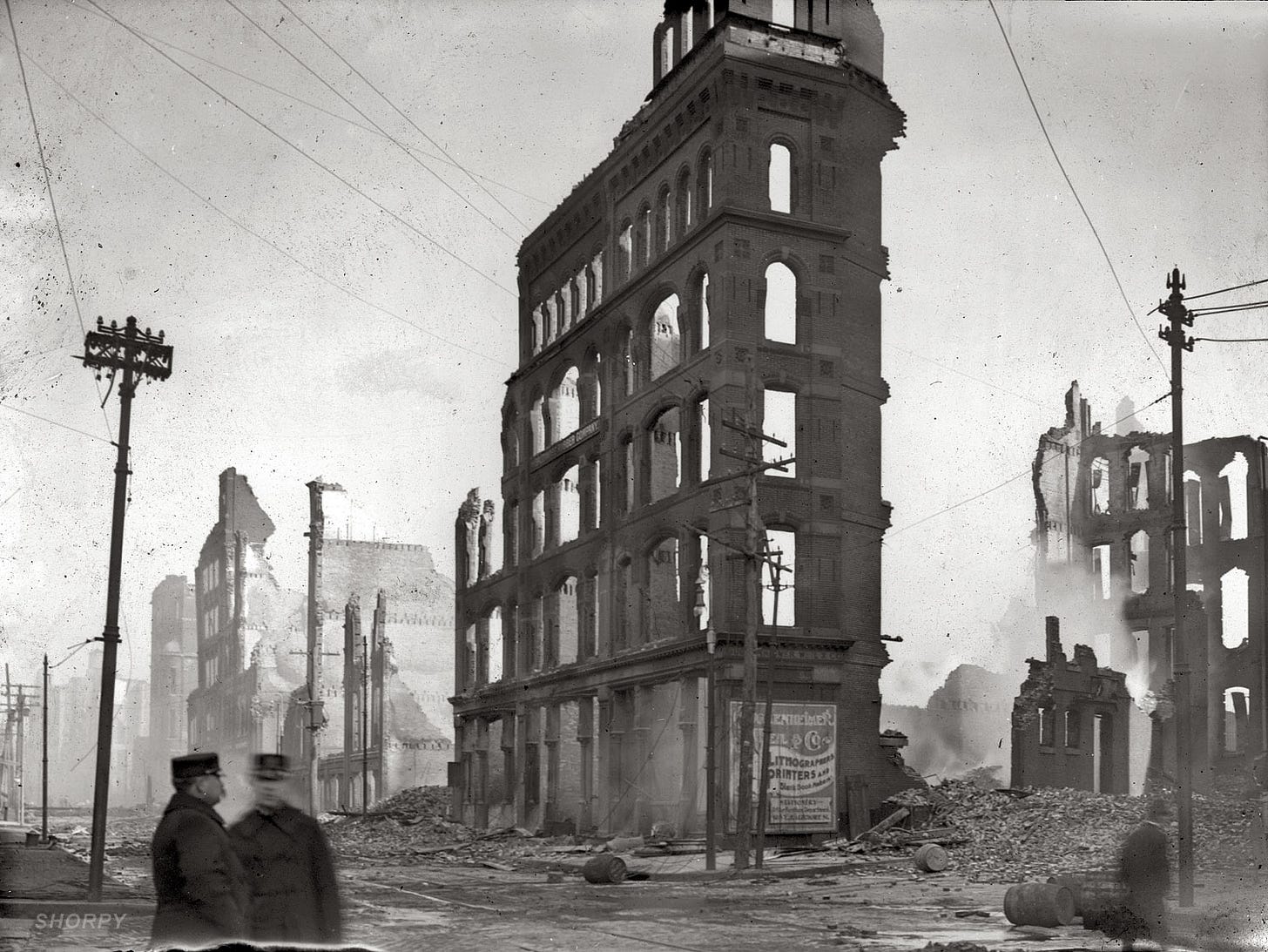On this day in 1904, the Great Baltimore Fire breaks out. The conflagration would decimate more than 1,500 buildings across at least 70 city blocks. More than 2,500 businesses were lost. About 35,000 people would be left unemployed.
The story is simultaneously one of tragedy—and triumph. It reflects the importance of a nation working together, but it also reflects the beauty of individual and local communities working to restore themselves.
Appropriate? This unique combination of national and local responsibility is the dynamic that has always made this nation great.
The Great Baltimore Fire caught the city off guard, starting at about 11:00 a.m. on a beautiful Sunday morning. The fire would ultimately rage for about 30 hours.
It may have started with a discarded cigarette dropped on the floor of the John E. Hurst building on modern-day Redwood Street. At first, the fire didn’t seem especially notable. Citizens gathered to watch as firefighters responded.
Then matters took a turn for the worse. An explosion rocked the building, blowing off the roof and breaking windows. Embers flew across the street and into neighboring buildings.
The fire had spun out of control. Making matters worse, the city’s fire chief was hit by a falling electrical wire early on. A district engineer and the mayor were left to take over, but they weren’t as efficient as the chief would have been.
By noon, the city was sending out requests to nearby fire departments. Help was badly needed.
Firefighters began arriving from neighboring cities, but they immediately faced a pressing issue: There were no national standards for fire hydrants; thus, Baltimore’s couplings were a different size from those in other cities. The fire hoses being brought in by other firefighters couldn’t be attached properly.
It was a problem that would plague the firefighting efforts.
By 5:00, the firemen were ready to try desperate measures. They used dynamite to blast several buildings ahead of the fire, hoping it would create a fire break. Unfortunately, the tactic made matters worse: The explosions sent more embers flying around the city, intensifying and spreading the fires.
Some portions of the city may have reached temperatures approaching 2,500 degrees. Fortunately, the wind finally shifted, driving the fire toward the water. Things would finally come under control late Monday afternoon.
The city had been devastated—but the people themselves were far from broken.
“To suppose that the spirit of our people will not rise to the occasion is to suppose that our people are not genuine Americans,” Mayor Robert McLane said soon afterwards. “We shall make the fire of 1904 a landmark not of decline but of progress.”
McLane expressed his appreciation for the help that was soon pouring in from all over the country.
“I cannot help but feel gratified by the sympathy and the offers of practical assistance which have been tendered to us,” he concluded, according to the Baltimore News. “To them I have in general terms replied, ‘Baltimore will take care of its own, thank you.’”
The city would rebuild within a matter of years—it even got a new, modern sewer system and other upgrades. Moreover, national standards were soon implemented for fire hydrants.
Such an American blend of both local and national approaches to a problem, isn’t it?
Sources can always be found on my website, here.





Wow. I don't believe that I remember having heard of the Baltimore fire of 1904 believe this. What devastation it brought but what a spirit of unity and pride from the Mayor and the people of Baltimore. The American spirit was in full action in Baltimore during the rebuilding efforts. The city didn't ask for assistance to rebuild. The city came together to make the rebuilt çity better than it was before the fire.
Not to spoil the story but, I seriously doubt that the city of Baltimore, or any other city would act with the same spirit of independence today. Thank you Tara for writing a story unknown to me.
I have kin folk who grew up in Baltimore, and I never knew of this till now!